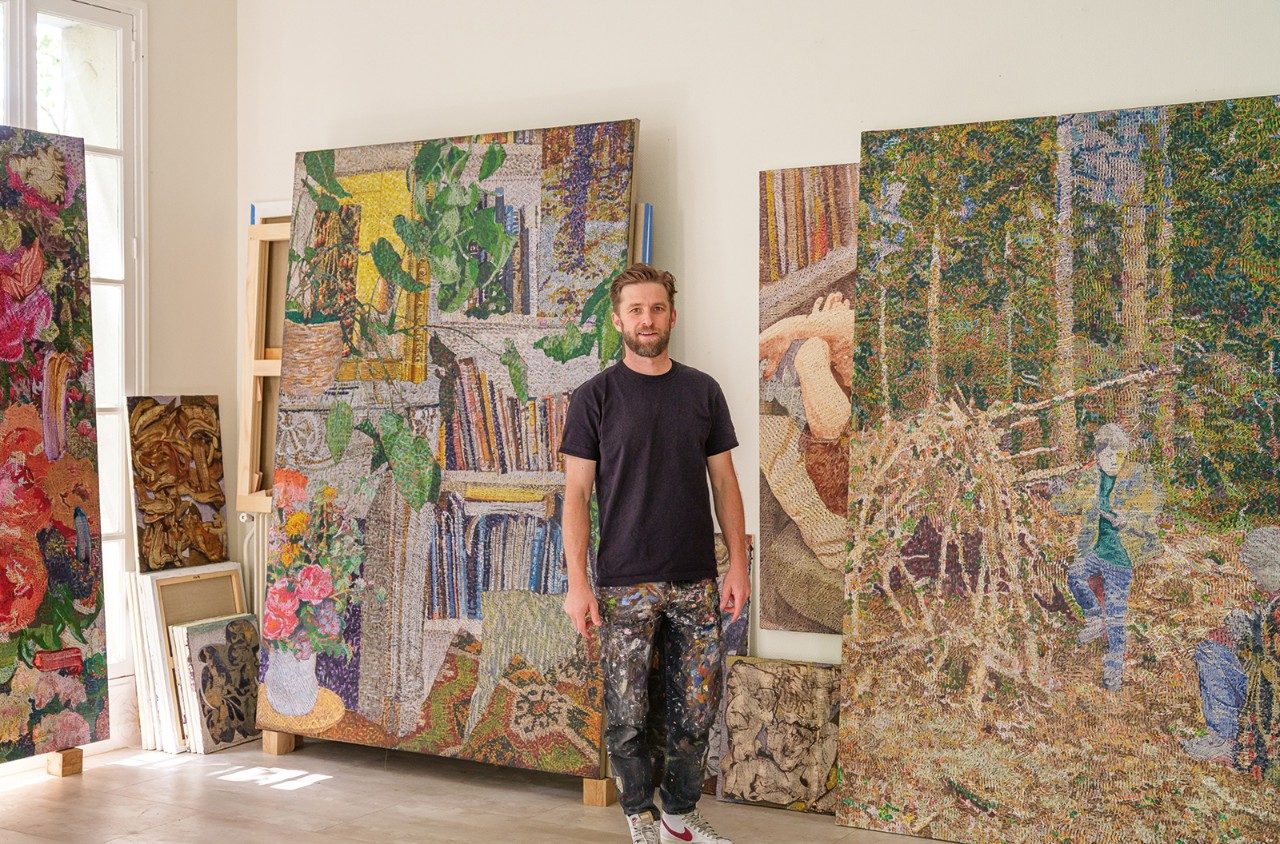Artist Gregory Hodge Pairs Abstraction With Illusion

Abstraction meets illusion in this artist’s vibrant, layered paintings.
“I didn’t show my work for a very long time after art school,” says Paris-based Gregory Hodge, who was born in Sydney and grew up in Canberra. “I wasn’t someone who finished and launched straight into a career. It took me many years.”
Between his studies (he holds a PhD from the Australian National University School of Art & Design) and his success as an artist, Hodge worked in the disability sector and as a casual teacher while he figured out his practice. “I’m really grateful for that time because while I wasn’t showing my work, I was developing it. And I think that’s a testament to what it is – it’s a slow process to make things.”
Slow is a word Hodge uses often in relation to his art making. Most recently, it surfaced in his fascination with “the slowness in the craft” of tapestry, particularly those from 17th- and 18th-century Belgium and France. “They’re made by hand over months and months and are really intricate,” he says. “I’m interested in the optical qualities and how to mimic them on a painted surface.”
Up close, Hodge’s works are a delight of discovery. Using handcrafted tools such as sponges, brushes and combs that are “crudely” engineered to help imitate woven, textured or layered surfaces, his process is not what it might appear to be. “It was never about gestural abstraction or abstract expressionism or anything like that,” he says. “It has always been about mimicry.”
This sense of effortlessness-meets-exactness is what makes Hodge’s paintings all the more fascinating to view. “They’re quite constructed and very contrived. Each one is a set-up of constructed composition, even though it looks kind of fluid and instant.” A metaphor for the creative process? “Yes, I think so,” he says with a laugh.
Exhibited at
Sullivan+Strumpf, Sydney, Melbourne and Singapore; Le Pavé d’Orsay, Paris; Galerie May, Paris; Sophie Gannon Gallery, Melbourne; National Gallery of Australia, Canberra; The American Club, Singapore; Canberra Contemporary Art Space.
Residencies
Cité Internationale des Arts, Paris (2019-20; 2024); The British School at Rome (2015); Basso Berlin (2011).
Breakthrough moment
“My 2017 solo show, Signs, at Sullivan+Strumpf Sydney, was a highlight because the National Gallery of Australia bought a significant painting. That was a big deal for me because the NGA was the first museum I had access to in Australia so I felt really proud.”



